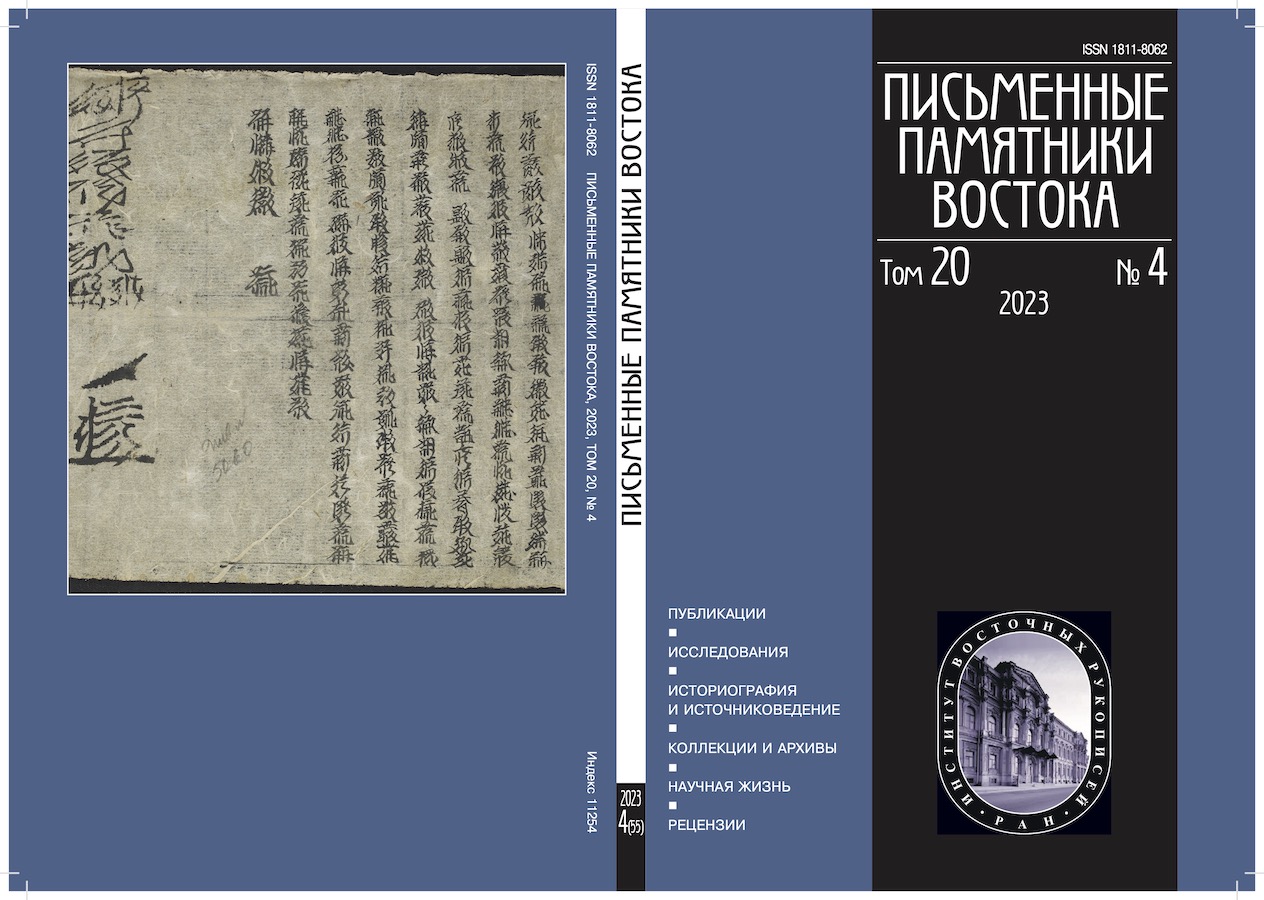Литографическое издание “Forms of the Canarese characters at different periods” (1833 г.) У. Эллиота из библиотеки ИВР РАН
- Авторы: Танонова Е.В.1
-
Учреждения:
- Институт восточных рукописей РАН
- Выпуск: Том 20, № 4 (2023)
- Страницы: 95-105
- Раздел: Коллекции и архивы
- Статья опубликована: 15.12.2023
- URL: https://journals.eco-vector.com/1811-8062/article/view/623657
- DOI: https://doi.org/10.55512/WMO623657
- ID: 623657
Цитировать
Полный текст
Аннотация
Статья посвящена вновь выявленному артефакту из библиотеки ИВР РАН. Издание 1833 г., выпущенное в г. Бомбей, подготовленное служащим британской администрации Индии У. Эллиотом (1803–1887), представляет собой каталог ранних форм алфавитных знаков письменности каннада, относящихся к VI в. н.э. Автор тщательно собрал материал из нескольких эпиграфических источников. Таблица со знаками предваряется Меморандумом, где У. Эллиот четко отвечает на вопросы, какой именно материал использован в литографии, где он был найден и к какому времени относится, и главное, зачем автор взял на себя труд по сбору и классификации эпиграфических знаков. Рассматриваемое издание является примером работы неутомимого исследователя, который в свободное от основной деятельности время занимался, очевидно, тем, что дорого его сердцу (как и многие другие исследователи всех времен), делая индийскую историю и культуру понятнее и ближе западному образованному читателю.
Ключевые слова
Об авторах
Елена Викторовна Танонова
Институт восточных рукописей РАН
Автор, ответственный за переписку.
Email: etanona@yandex.ru
ORCID iD: 0000-0001-9012-790X
кандидат филологических наук, научный сотрудник, ученый секретарь ИВР РАН
Россия, Санкт-ПетербургСписок литературы
- Андронов 1962 — Андронов М.С. Язык каннада. М.: Изд-во восточной литературы, 1962 (Языки зарубежного Востока и Африки).
- Андронов 1965 — Андронов М.С. Дравидийские языки. М.: Наука, ГРВЛ, 1965 (Языки народов Азии и Африки).
- Вечерина 2022 — Вечерина О.П. Роль и смысл панчакшары в тамильской шайва-сиддханте // Вечерина О.П. Шива и его бхакты: избранные статьи / Отв.ред. Р.В. Псху. М.: Садра, 2022. C. 219–228.
- Катенина 1963 — Катенина Т.Е. Язык маратхи. М.: Изд-во восточной литературы, 1963 (Языки зарубежного Востока и Африки).
- Климина 2013 — Климина Е.М. Каннада язык // Дравидийские языки / РАН. Институт языкознания. Ред. колл.: Н.В. Гуров, А.М. Дубянский, А.А. Кибрик, Е.Б. Маркус. М.: Academia, 2013. С. 269–312 (Языки мира).
- Corner 1854 — Corner J. India, Pictorial, Descriptive and Historical. From the Earliest Times to the Present. London: H.G. Bohn, 1854.
- Dictionary of National Biography — Elliot, Walter // Dictionary of National Biography, 1885–1900 [Электронный ресурс]. URL: https://en.m.wikisource.org/wiki/Dictionary_of_National_Biography,_1885–1900/Elliot,_Walter (дата обращения: 10.11.2023).
- Fleet 1916 — Fleet O.F. Salivahana and the Saka Era // The Journal of the Royal Asiatic Society of Great Britain and Ireland. Oct. 1916. P. 809–820.
- Foote 1876 — Foot Robert B. The Geological Features of the South Mahratta Country and Adjacent Districts”// Memoirs of the Geological Survey of India. 1876. Vol. XII. Pt. 1. P. 231–232.
- Hobson-Jobson 1996 — Yule H., Burnell A.C. Hobson-Jobson. The Anglo-Indian Dictionary. Ware: Wordsworth Editions Ltd, 1996.
Дополнительные файлы












